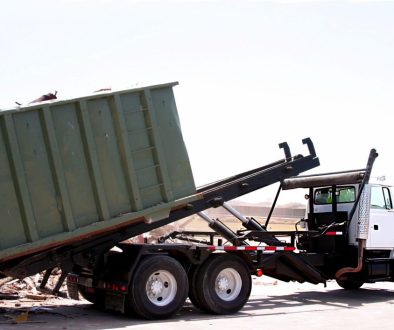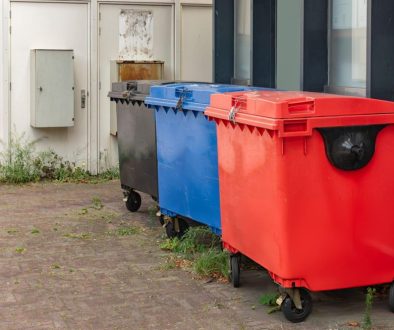Winter can pose unique challenges for managing hazardous waste, with cold weather affecting the storage and handling of potentially dangerous materials. As temperatures drop, the risk of accidents and spills can increase if proper precautions are not taken. It’s essential to understand these risks and how to mitigate them effectively.
When temperatures are low, certain waste materials can become more volatile or difficult to handle, making safe storage and disposal measures even more crucial. Proper management not only protects your home and environment but also ensures compliance with regulations designed to prevent harmful incidents.
By knowing the right strategies for dealing with hazardous waste in winter, you can safely navigate the season’s challenges. With careful planning and the right techniques, managing waste responsibly during colder months becomes a straightforward task.
Identifying Hazardous Waste Challenges in Winter
Winter brings specific challenges for handling hazardous waste, primarily due to cold weather conditions. These conditions can affect the properties and stability of various waste materials, making it crucial to understand the risks. Recognising these challenges aids in preventing accidents and ensuring safe waste management during the colder months.
1. Chemical Reactivity: Cold temperatures can affect the chemical reactivity of certain materials. Some chemicals may become more volatile, while others might freeze, leading to container ruptures or leaks.
2. Increased Moisture Levels: Snow and frost can introduce moisture into storage areas, potentially causing corrosion or damaging containers. This increases the risk of leaks, especially with metal drums or weaker plastic containers.
3. Physical Handling Difficulties: Handling becomes more difficult in icy conditions. Slippery surfaces increase the risk of spills during transportation or storage of waste materials, demanding extra caution.
4. Limited Ventilation: Closed environments in winter can lead to poor ventilation. Volatile compounds can accumulate, increasing the risk of inhalation or reactions due to inadequate airflow.
5. Reduced Daylight: Limited daylight hours may impact visibility during waste handling tasks, making proper lighting essential to ensure safety.
Being aware of these challenges allows you to take the necessary precautions to handle hazardous waste efficiently. Implementing safety measures tailored to these challenges will help ensure that you manage your waste safely throughout winter.
Effective Storage Solutions for Cold Weather
Storing hazardous waste effectively during winter requires careful planning and the right equipment. Cold weather can alter the stability and safety of waste materials, so adopting suitable storage methods is key to maintaining safety standards.
1. Temperature Control: Use insulated containers to maintain a stable temperature for sensitive materials. Temperature-controlled storage areas can prevent issues related to freezing or excessive cooling.
2. Moisture Protection: Implement moisture barriers, such as plastic liners or desiccants, to keep stored materials dry. This helps in preventing corrosion and deterioration of container materials.
3. Secure Containers: Ensure all containers are properly sealed and in good condition. Regularly inspect for cracks or damage, especially after extreme weather conditions.
4. Organised Storage: Arrange materials that require frequent access closer to entry points, reducing the need to move through potentially hazardous areas.
5. Sheltered Storage Locations: Utilise covered storage facilities where possible to shield waste materials from rain, snow, and other environmental factors.
6. Clear Labelling: Clearly label all storage containers with material information and handling instructions. This aids in quick identification and safe handling, especially in emergency situations.
By employing these storage solutions, you can maintain the integrity of hazardous materials and reduce the risks associated with cold weather. Proper storage is a fundamental step in ensuring that hazardous waste is managed safely throughout the winter months.
Safe Waste Handling Techniques in Low Temperatures
Handling hazardous waste during winter requires extra care to ensure safety. Cold weather can make materials more challenging to manage, increasing the risk of accidents. By following specific techniques, you can handle waste efficiently even in freezing conditions.
1. Wear Proper Gear: Dress in warm, protective clothing, including gloves and boots with good grip. Suitable clothing ensures safe handling and reduces the risk of exposure to harsh weather and hazardous materials.
2. Use the Right Tools: Ensure equipment like trolleys and lifting devices are suited for icy conditions. Non-slip mats and grippers can help prevent accidents and make movement safer.
3. Plan Routes Carefully: Keep paths clear of snow and ice. Mark walkways with visible signs and ensure they have good lighting for safe passage, reducing the risk of slips during transport.
4. Regular Equipment Checks: Inspect tools and machinery frequently. Cold weather can affect equipment function, so regular checks ensure everything operates correctly.
5. Team Coordination: Work in pairs or teams when handling large or heavy items. Effective communication and teamwork improve safety and efficiency.
These techniques are essential for safe waste management in winter. Observing these practices keeps you and your surroundings safe from the hazards posed by cold weather.
Tips for Preventing Hazardous Spills This Winter
Winter conditions can increase the likelihood of hazardous spills if precautions aren’t taken. Preventing spills starts with recognising the potential risks and taking proactive measures to address them.
1. Seal Containers Properly: Ensure all containers are sealed tightly. Inspect seals and replace them as needed to prevent leaks due to temperature fluctuations.
2. Check Storage Conditions: Regularly check storage areas for changes in conditions. Look out for ice accumulation which might affect stability or access.
3. Monitor Stock Levels: Avoid overfilling storage containers. Consistent monitoring helps you maintain safe levels and prevents overflow.
4. Use Secondary Containment: Employ additional containment solutions, like trays or bunds, to catch spills if a primary container fails.
5. Regular Training: Keep everyone involved well-trained. Knowing the correct procedures for spill response reduces panic and ensures quick, effective action when needed.
6. Implement Routine Inspections: Schedule regular inspections of all storage facilities and equipment. Identifying potential problem areas early reduces the chances of spills.
By adopting these tips, you can significantly reduce the risk of hazardous spills this winter. Prevention is key to maintaining a safe environment during the colder months.
Conclusion
Managing hazardous waste in cold weather demands attention to detail and the right strategies to ensure safety. Winter conditions can complicate waste management, but understanding the challenges and adopting practical solutions reduces risks effectively. From safe storage methods to preventative measures against spills, each step plays a critical role in maintaining safety.
Effective planning and regular inspections form the core of responsible winter waste management. These practices help minimise environmental impacts and ensure compliance with safety regulations. Handling hazardous materials with care and precision safeguards not only your immediate surroundings but also the wider community.
For those in Staffordshire seeking expert help in waste management and open skip hire, Enviro Skip Hire offers tailored solutions to meet all your needs. Contact us today to ensure your hazardous waste is handled with the utmost care and efficiency, even in the chilliest weather. Let’s work together to keep your environment safe and hazard-free all winter long!




